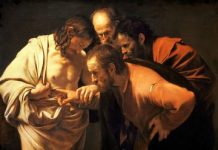BENEDICT XVI
GENERAL AUDIENCE
Paul VI Audience Hall
Wednesday, 30 January 2008
Saint Augustine of Hippo (3)
Dear Friends,
After the Week of Prayer for Christian Unity we return today to the important figure of St Augustine. In 1986, the 16th centenary of his conversion, my beloved Predecessor John Paul II dedicated a long, full Document to him, the Apostolic Letter Augustinum Hipponensem. The Pope himself chose to describe this text as “a thanksgiving to God for the gift that he has made to the Church, and through her to the whole human race”. I would like to return to the topic of conversion at another Audience. It is a fundamental theme not only for Augustine’s personal life but also for ours. In last Sunday’s Gospel the Lord himself summed up his preaching with the word: “Repent”. By following in St Augustine’s footsteps, we will be able to meditate on what this conversion is: it is something definitive, decisive, but the fundamental decision must develop, be brought about throughout our life.
Today’s Catechesis, however, is dedicated to the subject of faith and reason, a crucial, or better, the crucial theme for St Augustine’s biography. As a child he learned the Catholic faith from Monica, his mother. But he abandoned this faith as an adolescent because he could no longer discern its reasonableness and rejected a religion that was not, to his mind, also an expression of reason, that is, of the truth. His thirst for truth was radical and therefore led him to drift away from the Catholic faith. Yet his radicalism was such that he could not be satisfied with philosophies that did not go to the truth itself, that did not go to God and to a God who was not only the ultimate cosmological hypothesis but the true God, the God who gives life and enters into our lives.
Thus, Augustine’s entire intellectual and spiritual development is also a valid model today in the relationship between faith and reason, a subject not only for believers but for every person who seeks the truth, a central theme for the balance and destiny of every human being. These two dimensions, faith and reason, should not be separated or placed in opposition; rather, they must always go hand in hand. As Augustine himself wrote after his conversion, faith and reason are “the two forces that lead us to knowledge” (Contra Academicos, III, 20, 43). In this regard, through the two rightly famous Augustinian formulas (cf. Sermones, 43, 9) that express this coherent synthesis of faith and reason: crede ut intelligas (“I believe in order to understand”) – believing paves the way to crossing the threshold of the truth – but also, and inseparably, intellige ut credas (“I understand, the better to believe”), the believer scrutinizes the truth to be able to find God and to believe.
Augustine’s two affirmations express with effective immediacy and as much corresponding depth the synthesis of this problem in which the Catholic Church sees her own journey expressed. This synthesis had been acquiring its form in history even before Christ’s coming, in the encounter between the Hebrew faith and Greek thought in Hellenistic Judaism. At a later period this synthesis was taken up and developed by many Christian thinkers. The harmony between faith and reason means above all that God is not remote: he is not far from our reason and our life; he is close to every human being, close to our hearts and to our reason, if we truly set out on the journey.
(To continue reading, please see here).








